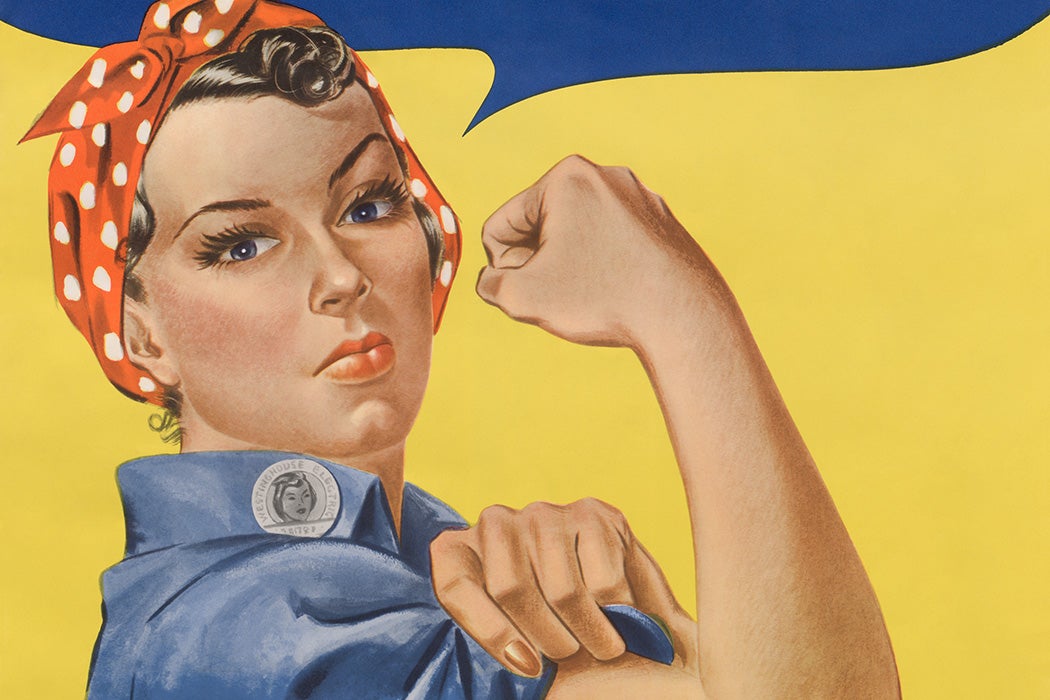Today the iconic “We Can Do It” poster from World War II is found everywhere from coffee mugs to memes. It’s a fundamental piece of the personification of the American women who joined the war effort in blue-collar jobs: a wave of “Rosie the Riveters.”
Yet according to communications scholar James J. Kimble, most of what we think we know about the poster is questionable. Speeded up by the internet’s “unchecked system of unverified cultural knowledge,” he argues, an “elaborate series of misunderstandings about the poster’s history” has accrued over recent decades.
For instance, many assume the poster was produced by the U.S. government. It was actually the work of an advertising agency commissioned by the Westinghouse Electric and Manufacturing Company; it was meant to boost morale among all of Westinghouse’s employees for a couple of weeks in February 1943. It was unlikely to have ever been seen by many people outside of Westinghouse’s plants until its resurrection from the archives four decades later.
The inspiration for the poster is also disputed. Geraldine Hoff Doyle (1924–2010) is often cited as the model of the can-do woman worker rolling up her sleeve. This is because, in the 1980s, Doyle recognized herself in the photograph considered to be the designer’s inspiration. “She regularly received letters from schoolchildren, who were eager to reach out to Rosie herself,” Kimble writes. Her obituaries routinely noted the connection.
But while Doyle was, in fact, a war industry employee in Michigan and did look like the poster’s subject, Kimble tracked down the actual woman in the original photograph. Naomi Parker Fraley (1921–2018) was working halfway across the country in a shipyard in Alameda, California. Fraley had once sent in her photograph to the Rosie the Riveter World War II Home Front National Historical Park in Richmond, California, in response to a call for material, but they sent it back and told her that everyone knew the woman pictured was Doyle. (The original Acme Photo image had a detailed caption identifying “pretty Naomi Parker.”)
Nobody attributes bad motives to Doyle’s claim. Kimble is interested in the way this story illustrates the “woozle effect,” the informal name for evidence by circular citation of an incorrect source. As he puts it, “a flawed initial claim is prominently cited by secondary publications, in turn leading later works to cite the secondary sources that all but erase the flawed nature of the original claim.”
“Rosie the Riveter” originates in a 1942 song written by Redd Evans and John Jacob Loeb. They seem to have been inspired by a newspaper story about Rosalind Palmer Walter (1924–2020), who riveted Corsair fighter planes together during the war.
Weekly Newsletter
After the song became a big band hit, Rose Will Monroe (1920–1997), who worked for the Ford Motor Company, was “Rosie” in a promotional documentary. Yet another Rosie was Rosina Bonavita, who stepped into the limelight in 1943 when she and her riveting partner set a speed record for putting together a torpedo bomber.
While the “We Can Do It” woman is nowhere named on the Westinghouse poster, Norman Rockwell’s May 29, 1943, Saturday Evening Post cover character is. “Rosie” is written upon her safety visor, her rivet gun across her lap, a sandwich in her hand, and her shoe atop Mein Kampf. Rockwell’s model was his neighbor Mary Doyle Keefe (1922–2015), who worked as a telephone operator.
In the end, it may be that the historical personification of Rosie the Riveter is more important than her real identify.
Support JSTOR Daily! Join our new membership program on Patreon today.







